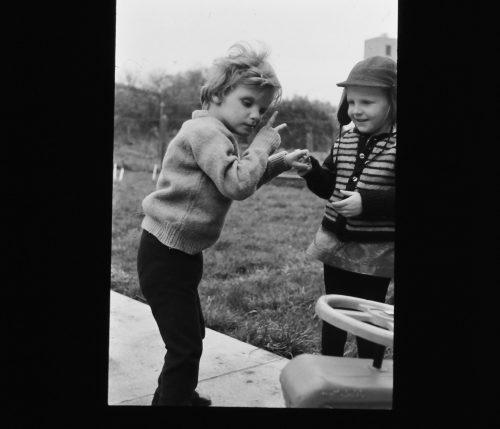Here are our graduate artists-in-residence latest reflections on the creative practice during their residencies with us…
“I am, yet what I am no-one cares or knows” (John Clare) by Helen Kilby-Nelson
 I came across the poem, ‘I Am’ some years ago when I was going through a particularly bad period of mental health illness. It is one that I return to often and I have also used it within my work. We often hear people say that nobody truly knows what another person has been through or is going through; yet how often do we see evidence of prejudice, marginalisation, inequality etc in our society, much of it based on semiotics and preconditioned ways of thinking? Often ill-informed and lacking in facts, judgements are made on others. It does not surprise me therefore, that mediated fake news has been so effective.
I came across the poem, ‘I Am’ some years ago when I was going through a particularly bad period of mental health illness. It is one that I return to often and I have also used it within my work. We often hear people say that nobody truly knows what another person has been through or is going through; yet how often do we see evidence of prejudice, marginalisation, inequality etc in our society, much of it based on semiotics and preconditioned ways of thinking? Often ill-informed and lacking in facts, judgements are made on others. It does not surprise me therefore, that mediated fake news has been so effective.
My first recollection of such behaviour was when I was about 5 years old, in a local supermarket with my brother and mother. I heard the whispers, saw the looks, even a pointed finger as we walked among the aisles. The reason? My brother is severely physically and mentally disabled (I don’t know if the word disabled is PC but the truth is, his life is irrevocably disabled). He looks different, he makes involuntary noises, he doesn’t fit society’s ‘norms’.
I think it was from that point that I began to study how people interact with one another, how quickly minds are made up about a person. I have defended myself against religious prejudice, mental health prejudice and housing prejudice. Why do hierarchies exist other than to give those at the top a feeling of importance and those at the bottom a feeling of impotence? I sometimes feel I have been fighting all my life, but only now do I have a voice.
I have not forgotten a single remark made to me or against me that has come from a place of ignorance, hate or privilege – and there have been many. I don’t write about these to garner personal sympathy, I don’t want to hear platitudes or “I’m so sorry’s”. All these incidences of prejudice and marginalisation are what drive my work, and not just those that have personally happened to me.
The Praxis of Memoria III by Adam Neal
“We aren’t dealing with objects, we’re dealing with pieces of time” (Atherton, K, 2019).
In most recent iteration of ‘In Two Minds’ (1978), Kevin Atherton made the aforementioned remark to his younger self in a reactive, satirical performance. Out of all of the remarks made, this one resonated with me. Do we to view the outcome as something that exists in the present or past? If it was originally produced in 1978, but now being responded to in 2019, what plane of existence does it reside within?
Both. Okay. Great.
Translation of objects again becomes more prominent when viewing them from this perceptive, and within an artist context. Kevin Atherton’s original recording being from 1978 means it is exactly a ‘piece of time’, only through translation, acknowledgement and reaction does this then become an updated piece of time, and exists within a contemporary artistic and societal context. Moreover, I think the phrase ‘pieces of time’ could prove problematic, as it the exact timeframes we’re working within are not strictly defined, therefore this phrase needs to be attached to a specific object in order for it to react to the original objects context and connotations.
The wallpaper in my Nan’s wallpaper is a piece of time, mainly because I think it is, but also because it’s nature hasn’t altered in 20-30 years. Its pattern is heavily referential of a certain period of interior design within the U.K, and has specific cultural connotations. It’s important to label this object as a piece of time, as the time element is crucial to the communication of my themes. I deem it to convey traditional ‘working-class’ sentiments and aesthetics, and I emphasise the importance of the word traditional. Working-class culture has mutated and shifted over the past 20 years, and arguably is a brittle class categorisation due to the “shift in employment and investment from production to consumption industries” (Joyce, P. 1995).
In conjunction with the objects themselves is the environment they reside within, as the combination of place and object is where the connotations, relationships and associations are conceived. So, for me to characterise my Nan’s wallpaper, as a piece of time alone is not concrete enough, as it does not elude to the importance of place in relation to the object.
“Place is at the heart of not only who we are, but also of the culture in which we find ourselves.” (Trigg, D. 2013)
Trigg’s statement elucidates a cycle that is consistent within my process in terms of thinking and making:
Object – Place – Culture.
All objects are technically ‘pieces of time’, however the specific time it references, and their physical placements both culminate to convey a specific cultural reference. Also, I think I just REALLY like the phrase ‘pieces of time’.
“it is impossible that individuals should totally coincide with their social being, or that social being should encompass all the dimensions of individual existence” (Gorz, A. 1982).
“It isn’t necessary for a work to have a lot of things to look at, to compare, to analyse one by one, to contemplate. The thing as a whole, its quality as a whole, is what is interesting. The main things are alone and are more intense clear and powerful. They are not diluted by an inherited format, variations of a form, mild contrasts and connecting parts and areas” (Judd, D. 1964, pp 4).
THE MEMORY OF PLACE: A PHENOMENOLOGY OF PLACE

